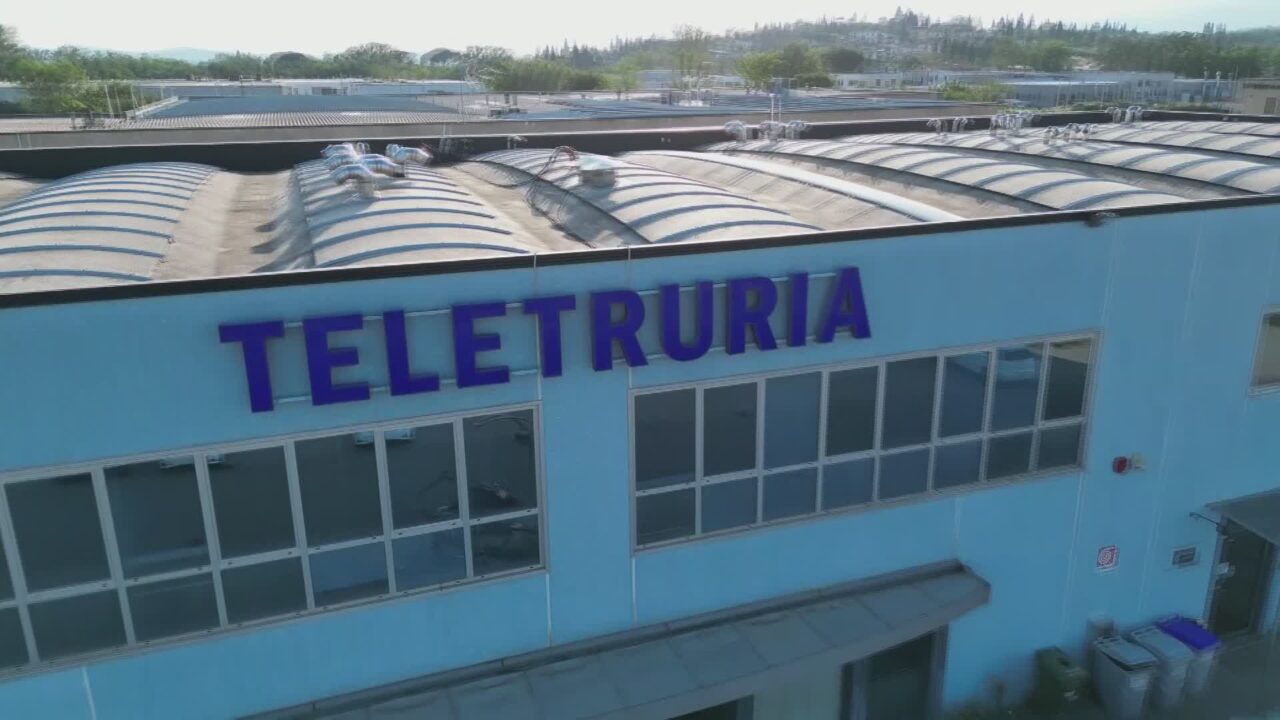https://youtube.com/shorts/M8YCIBYOBAE?feature=share
On Monday, March 10th, my Innovators in Journalism classmates and I once again loaded into a van and drove to the Teletruria Studio, one of Arezzo’s main news networks. When we got there, we were greeted by Maddalena Pieroni, a charming journalist with gorgeous hair that made us feel instantly comfortable. We introduced ourselves and explained our majors to her, and then her boss, Alex Revelli, came down and kicked off the grand tour of the studio.
In the video above, you’ll get to experience the tour with me as he guides us through Teletruria’s impressive space, which was absolutely amazing to experience first-hand. We explored the journalists’ offices, the editing rooms, a photography studio, and intricately designed sets, where each space revealed a different part of the news production process. It really takes a village! I think the most surprising stop was the fully stocked kitchen set, equipped with every appliance a guest chef might need for a live cooking segment. After wrapping up the tour, we had the chance to squeeze in a quick interview before our big moment: stepping in front of the cameras ourselves. That’s right, we were about to be on the news. Live.
But let me back up for a moment—before our Italian newscast debut, we sat down for an interview with Alex and Maddalena. We asked them all sorts of questions on innovation, with my area of focus on the risks taken in order to innovate. Going around in a circle to ask questions, I was last in our group to ask my question. When my turn came, I asked, “In the span of your 51 years on air, what has been your biggest risk taken?”
He didn’t hesitate: “The money.” He went on to explain that, over the course of the 50 years Teletruria has been around, everything has changed. The advertising landscape is new, and audiences are consuming content in more ways than in the past.“The advertising is not on the same level. It depends on the people that are working in the advertising office.” Their team had a huge impact on this aspect, but before they could innovate, they needed a problem to fix: “Two years ago, during COVID, the government cut our funding and we lost €300,000. That was big money for us.” To combat this, the Teletruria team crafted a new strategy centered around ramping up their advertising and making up the lost revenue that way. He mentioned that the quality of the commercials have improved and they are now on a sustainable business path. “Now, we’re not just a leader in Tuscany. We’ve become the top television station in central Italy in terms of advertising revenue. Previously, we relied solely on government funding,” Alex told us.
The lesson here is that sometimes you must take a financial risk when it comes to innovating. In Teletruria’s case, when their traditional revenue stream was seriously disrupted by external factors like COVID and the subsequent government cuts, the network confronted the problem head-on. They chose to address the problem, even though it was a financial risk for them, and they rethought their business model. And now they are the top earners in central Italy. It quite literally pays to innovate.
We wrapped up the interview after that, and then the moment we’d all been anticipating arrived. It was time to transition from behind-the-scenes to in front of the camera to make our Italian daytime television debut. We saw the monitor count us down, and then suddenly we were live and on air. Instantly, I was worried about how my hair looked on camera. But hey, sometimes you’ve just got to take risks.


Leave a Reply